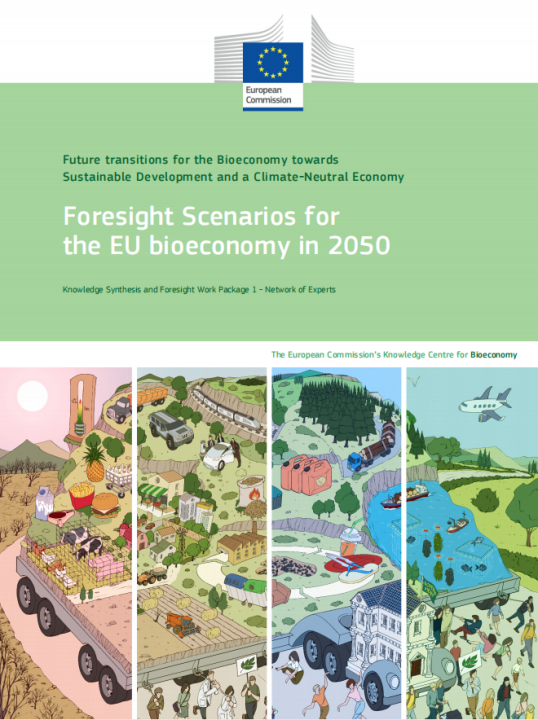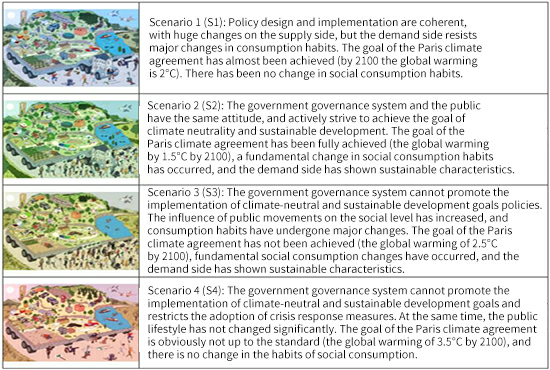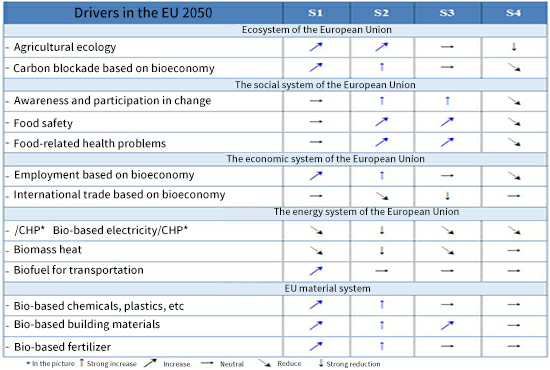Since the EU released the "Bio-Economy Strategy" in 2018, for various reasons, it has become the EU's top priority to devote itself to the development of a circular economy in Europe and to achieve sustainable development. For social and industrial development, the orientation is self-evident.
After launching this strategy, the European Commission’s Joint Research Center (JRC) and the Directorate-General for Research and Innovation (DG Research and Innovation) established a temporary ad hoc expert network as the European Commission’s EC Knowledge Center for Bioeconomy (EC Knowledge Center for Bioeconomy) provide the necessary forward-looking analysis to explore solutions to achieve sustainable bioeconomy. The focus of the expert group is climate neutrality and sustainable development.
On April 12, 2021, the team released its research results-"European Bioeconomy in 2050: Four Prospective Scenarios."
A team of six core experts collected intelligence from policy, social, industrial and academic fields to predict four scenarios for the EU bioeconomy in 2050, and elaborated on the preliminary thinking and feedback from these scenarios on the transition path in 2030. The insights into the future development of the bioeconomy in Europe and other regions focus on the realization of a circular and sustainable bioeconomy in the EU and the world.
As one of the results of the EU's "Future Transformation of Bioeconomy to Sustainable Development and Climate-neutral Economy", the report analyzes the EU's future bioeconomy development path and proposes four possible development prospects. The scenario involves two time nodes, 2030 and 2050. 2030 is the intermediate time node of the EU's bio-economy path transition, and 2050 is the long-term focus node of the bio-economy transition.

Four scenarios for the development of EU bioeconomy in 2050
What will happen to the EU's bioeconomy development in 2050? What about social and industrial development in each case? The report pointed out that the team identified the most important and uncertain driving factors based on internal seminars and used a 2 x 2 matrix to determine several scenario logics. The following 4 scenarios are set up with structured logic:

In the four scenarios of EU bio-economy development in 2050, what are the impacts on the four major factors of ecosystem, social system, economic system, energy system, and bio-based material system? The following table shows the development and trends of factors in different systems in the four scenarios.

Summary of relevant drivers of the EU bioeconomy forward-looking scenario
Milestones in the development of the EU's bioeconomy in 2030
Scenario 1 and Scenario 2: Reaching a new green agreement (expanding funds for large-scale expansion and renovation of infrastructure) is a key milestone. Sustainability standards are formulated for the introduction of bioeconomy-related commodities, implement EU carbon tax border adjustments, establish a level playing field between the EU and its trading partners, and incorporate bioeconomy investment into the EU tax system.
Scenario 2: Cross-industry and vertical (EU, member states, cities and regions, and citizens) are needed to achieve policy integration.
Scenario 2 and Scenario 3: The basis for promoting demand-side transformation is to strengthen cultural and social activities, especially in food and transportation.
In Scenario 3, this will be a bottom-up dynamic, because EU policy is still passive at present.
In Scenario 2, the EU’s proactive consumer policy must be adopted by 2030. The EU's inclusive policy on the dissemination and education of the "bioeconomy" is extremely important, and it is even more necessary to reach EU citizens effectively. An important milestone in this regard may be a series of media campaigns and the EU "city hall meeting."
Scenario 4: There is no milestone, because it represents a passive policy on the corporate and citizen side. This is an extension of the past policy. If no further actions and measures are taken, it may become a reality in the future.
Key insights into the future development of the bioeconomy
The last part of the report summarizes the key insights gained from exploring the forward-looking scenarios of the EU bioeconomy.
Scenario 1: Focus on the supply side. Although it is effective for mitigating and adapting to climate change, it needs to face huge trade-offs.
Compared with Scenario 2, increasing demand requires certain supply-side measures, which means that there is a risk of social acceptance. The post-2030 green policy is extremely important for promoting innovation and cooperation with member states, but there are problems with the response outside the EU in terms of social sustainability.
Scenario 2: Follow a comprehensive approach and provide the best but most challenging solution. Bioeconomic policies must be in contact with society, and social movements that embrace the diversity of member states. The bioeconomy requires cooperation up and down the entire industrial chain, as well as cooperation with partners outside the EU.
Scenario 3: Focus on the demand side. Due to the lack of policy support and the lag of enterprise transformation, the effect of climate change adaptation and mitigation is limited. It also proves that strong social and cultural movements based on local actions and networks are crucial. Raising the awareness and education of citizens is not only a matter for member states, but also part of a wide range of social and cultural activities.
Scenario 4: The most unfavorable, but considering the trend of the past 30 years, this is probably the most realistic. Short-sighted, uncoordinated, and disagreeable policies at all levels will cause huge losses.

